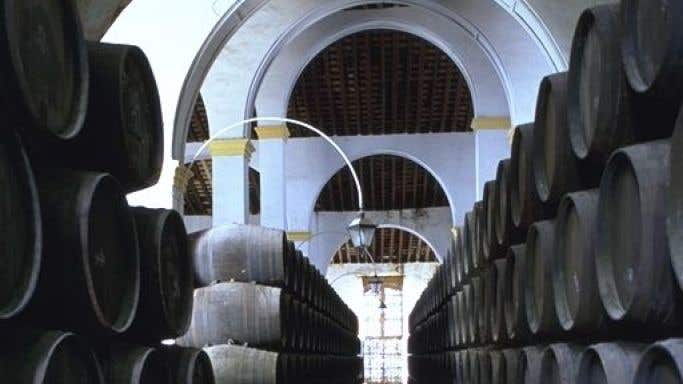From £7.25, €15.50, AU$35
Last weekend I was in Romania presenting a tasting at the ROvinHUd wine fair in Timișoara, a brilliant charity event described by Jancis in Benevolence in Transylvania after her participation in the launch this time last year. (The odd-looking name is a cobbling together of ROmania, HUngary and vin for wine, with a play on the name Robin Hood!)
The theme for my tasting was 'The Oxford Companion to Wine: What's New?' and included this delicious fino sherry as an example of en rama, one of the 300 new entries in the Companion. (For other examples of the style, see González Byass Palmas sherries and Richard's comparison of 'regular' sherries v their en rama siblings.)
I wasn't sure what sort of reaction I would get as it is a very definite style of fino – bone dry, full-bodied and quite densely textured even though it has all the lovely classic salty, yeasty, bruised-apple fino aromas and flavours. The feedback from the 75 or so tasters was extremely positive and one couple took the trouble to come up to me afterwards to say that the wine had converted them from fino sceptics to finophiles.
Sánchez Romate's Fino Perdido is neither a classic fino nor perhaps a classic en rama wine. The name means 'lost fino' and refers to the fact that it is a style of wine, an aged fino bordering on fino-amontillado (a classification that no longer exists), that is today relatively rare. It does spend all of its 7-8 years under the film-forming yeast called flor that protects the wine from oxygen (keeping it pale and fresh) but it spends considerably longer in the sherry butts than your average fino, hence the depth and power without increased alcohol (which is still only 15%). The wine is taken from 15 near-identical butts considered to be of similar style and evolution, hence the 1/15 on the label.

The label does not actually mention the term en rama (literally meaning 'raw' but as yet with no regulated definition) – not all such wines do – but it is treated very little between butt and bottle, just a very light filtration, so that, as the helpful back label explains (see below), it may not be totally transparent and some harmless tartrate crystals may form in the bottle. While it is generally recommended that en rama sherries be drunk young, and some producers release them once or twice a year, notably in the spring, this one is more robust and still tastes fresh as a daisy after nearly six months in the bottle.
Sánchez Romate was established in the centre of Jerez de la Frontera in the late 18th century, making it one of Spain's oldest wineries still in operation and also one of the few in Jerez that is still family owned. They export the Fino Perdido to the UK, Australia, New Zealand and Denmark and it is widely available in Spain of course, and can be found in many tapas bars in Jerez. Peter Dauthieu of both Viniberia and Sánchez Romate's UK importer Ehrmanns kindly sent the very detailed list of stockists below. It is not currently available in the US but Dauthieu is hopeful that it will be in 2016.
The really remarkable thing about this wine – in addition to its glorious aroma, taste, texture and food-friendliness, not to mention its persistence on the palate – is its amazing value for money, especially at the UK Wine Society's crazily low price of £7.25 a bottle.
UK retailers: The Wine Society, Fortnum & Mason, Last Drop Wines, Shenfield Wine Co, Winchombe Wine Merchants (Cheltenham)
London restaurants: Cambio de Tercio, Tendido Cuatro, Tendido Cero, Capote y Toro, Barcelona Tapas Bar & Restaurant, Barrafina Restaurants, Meson Don Felipe, The Truscott Arms, The Remedy, Bar Tozino
Wales: Fingal Rock (Monmouth)
New Zealand: imported by the Giesen Familly and available from Giesen Wines Cellar (Marlborough)
Australia: imported by The Spanish Acquisition; www.shopforwine.net.au
Denmark: Wulff & Vin (Copenhagen)
Spain – shops in Jerez: La Vinateria, Licores Corredera, Mantequerias Jerezanas, La Queseria; restaurants in Jerez and Puerto de Santa Maria: El Faro del Puerto, El Bichero, La Carbona, ValdePepe


